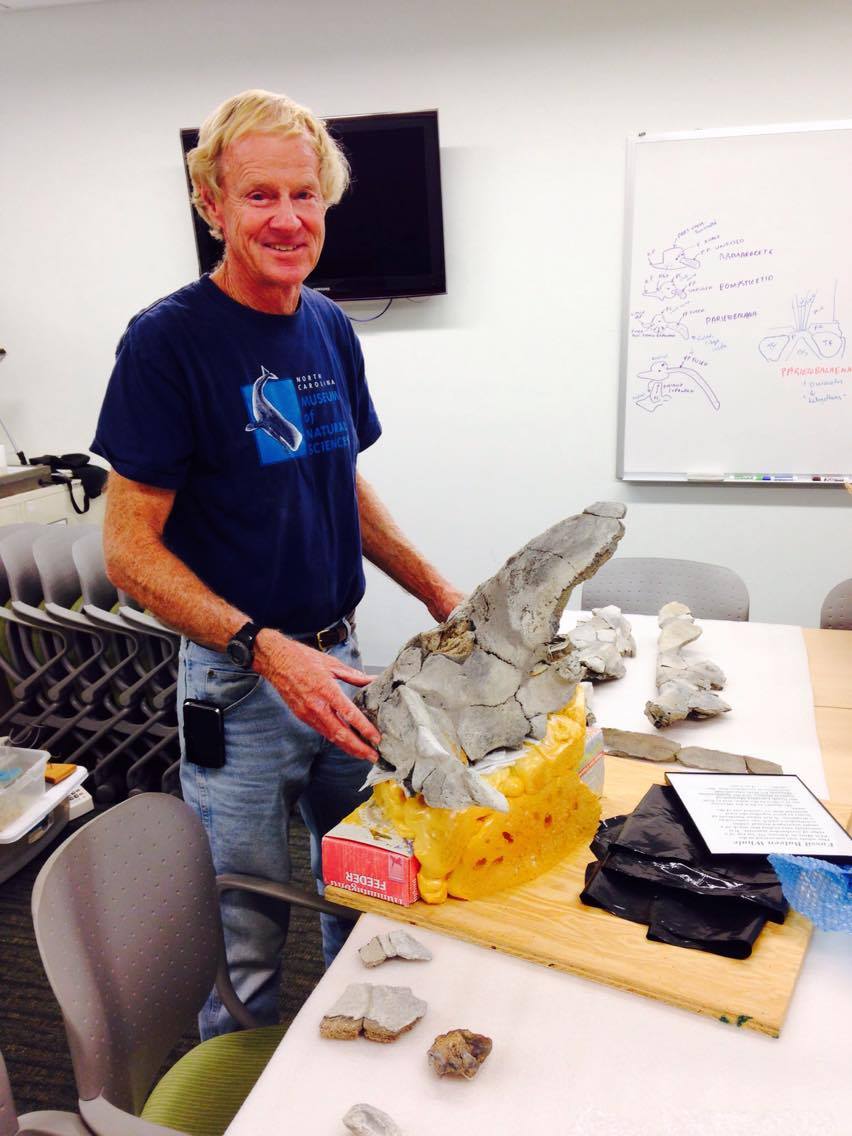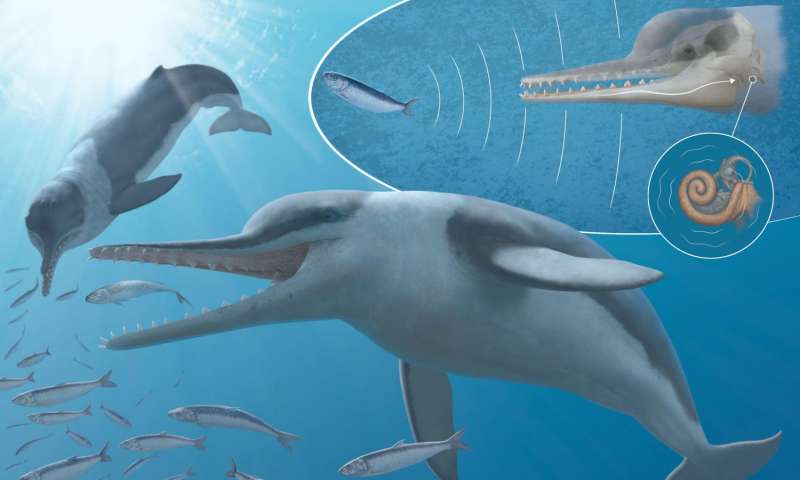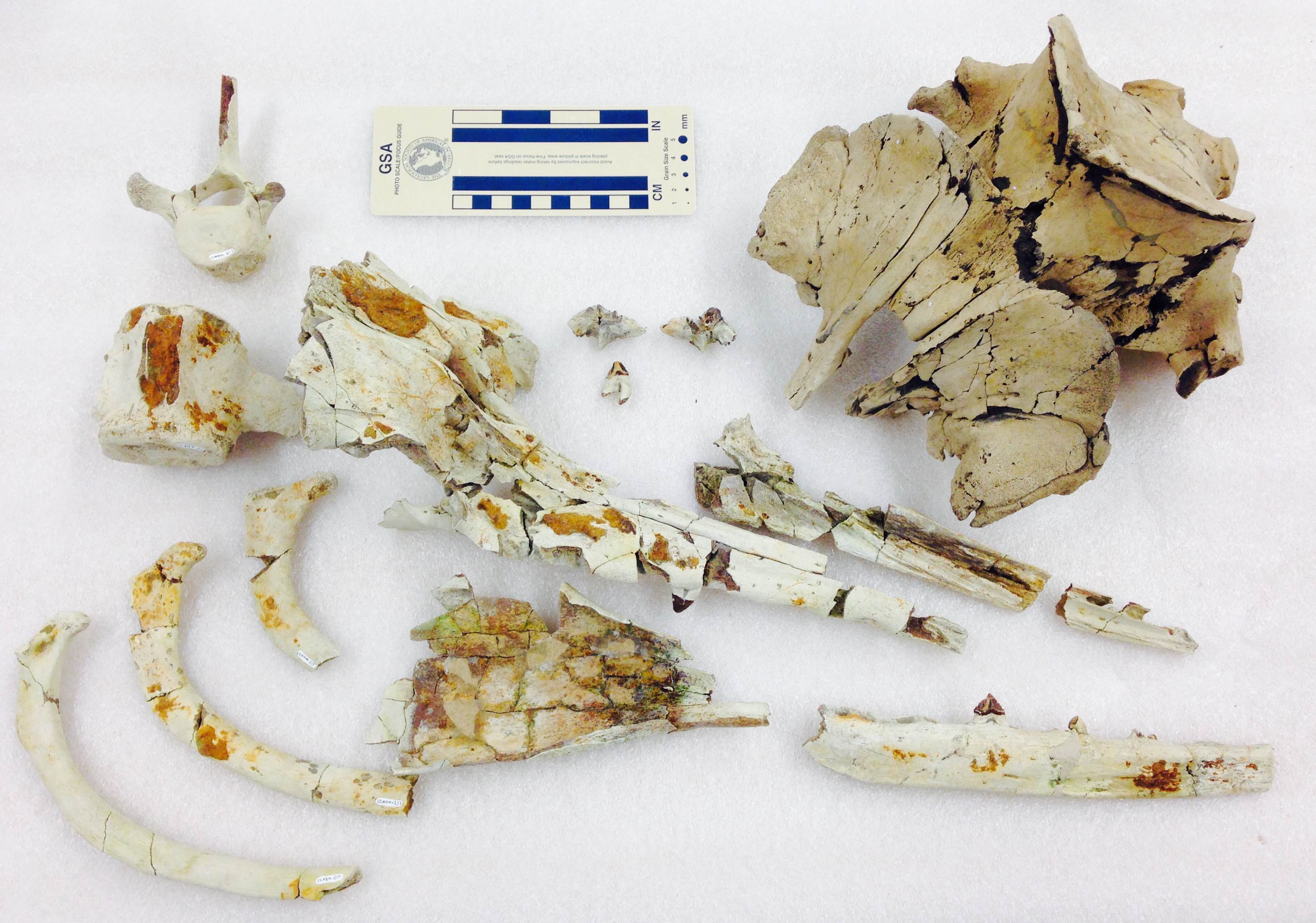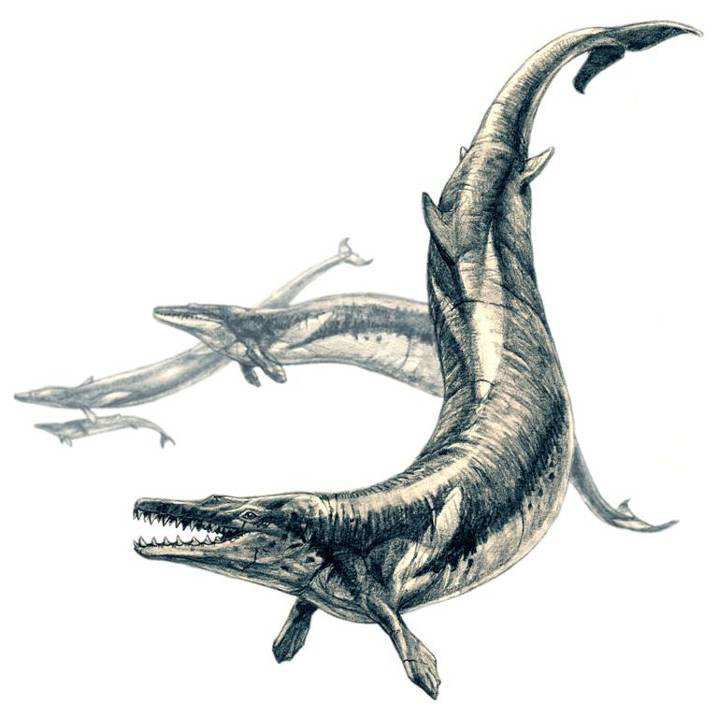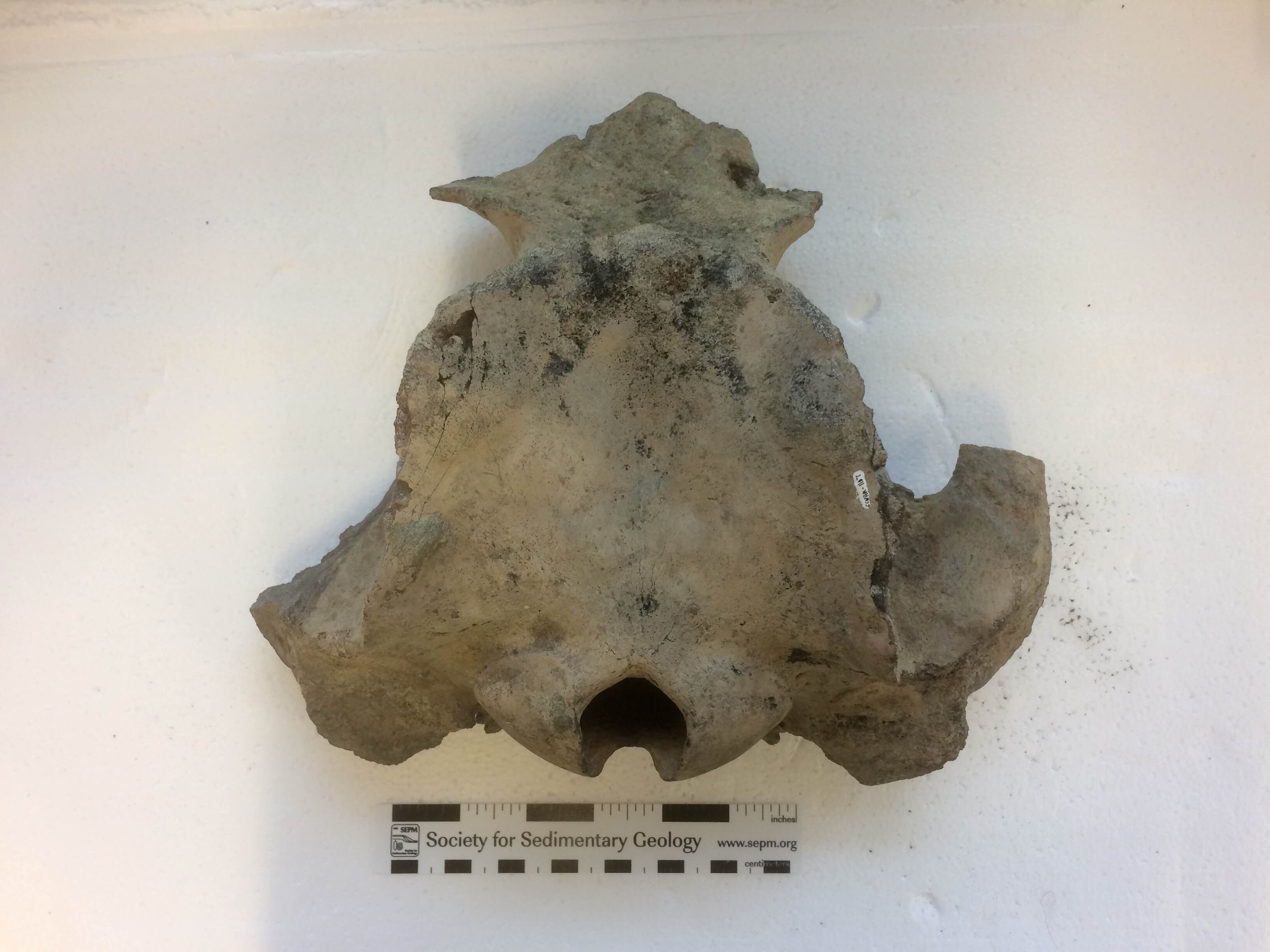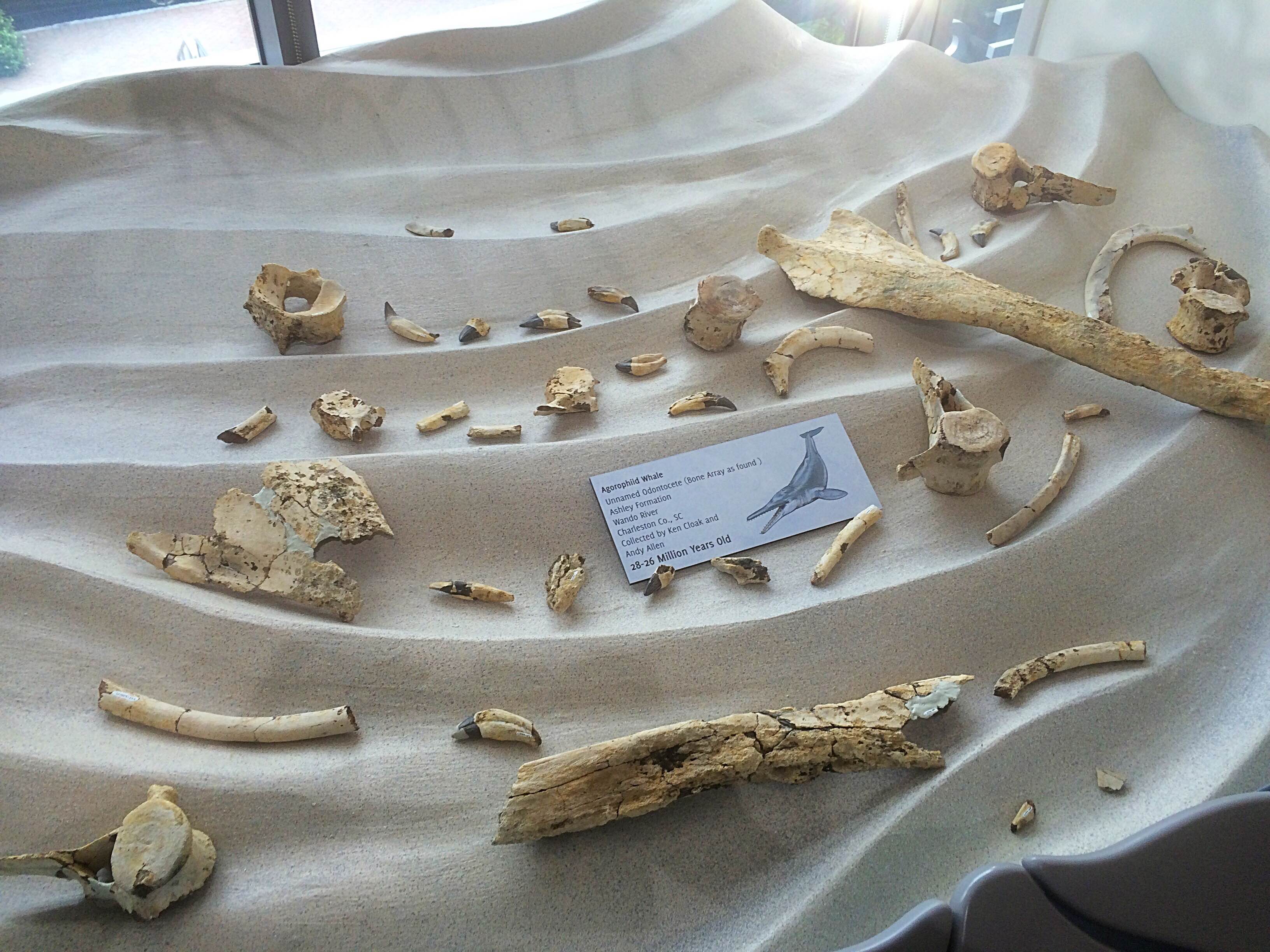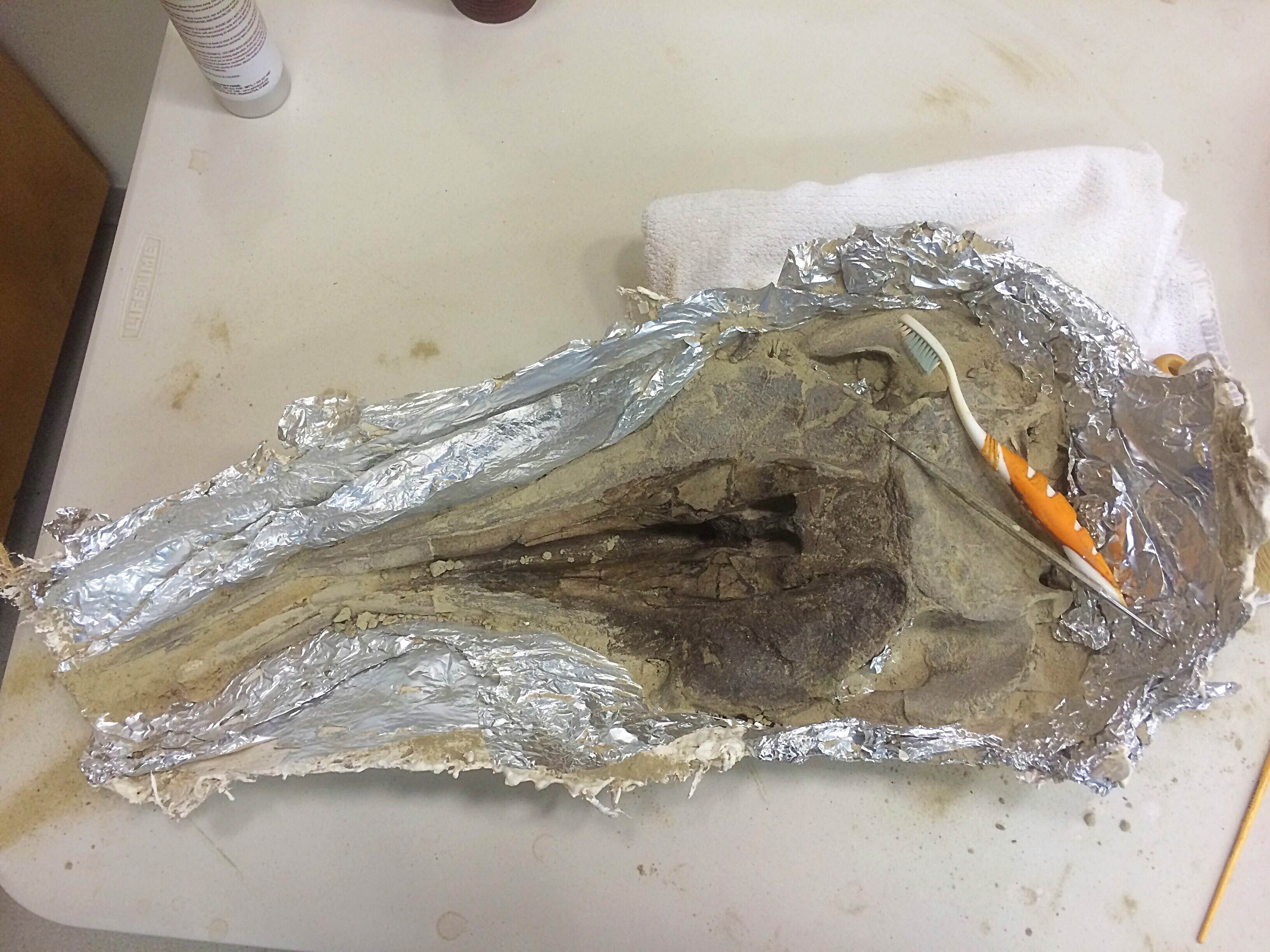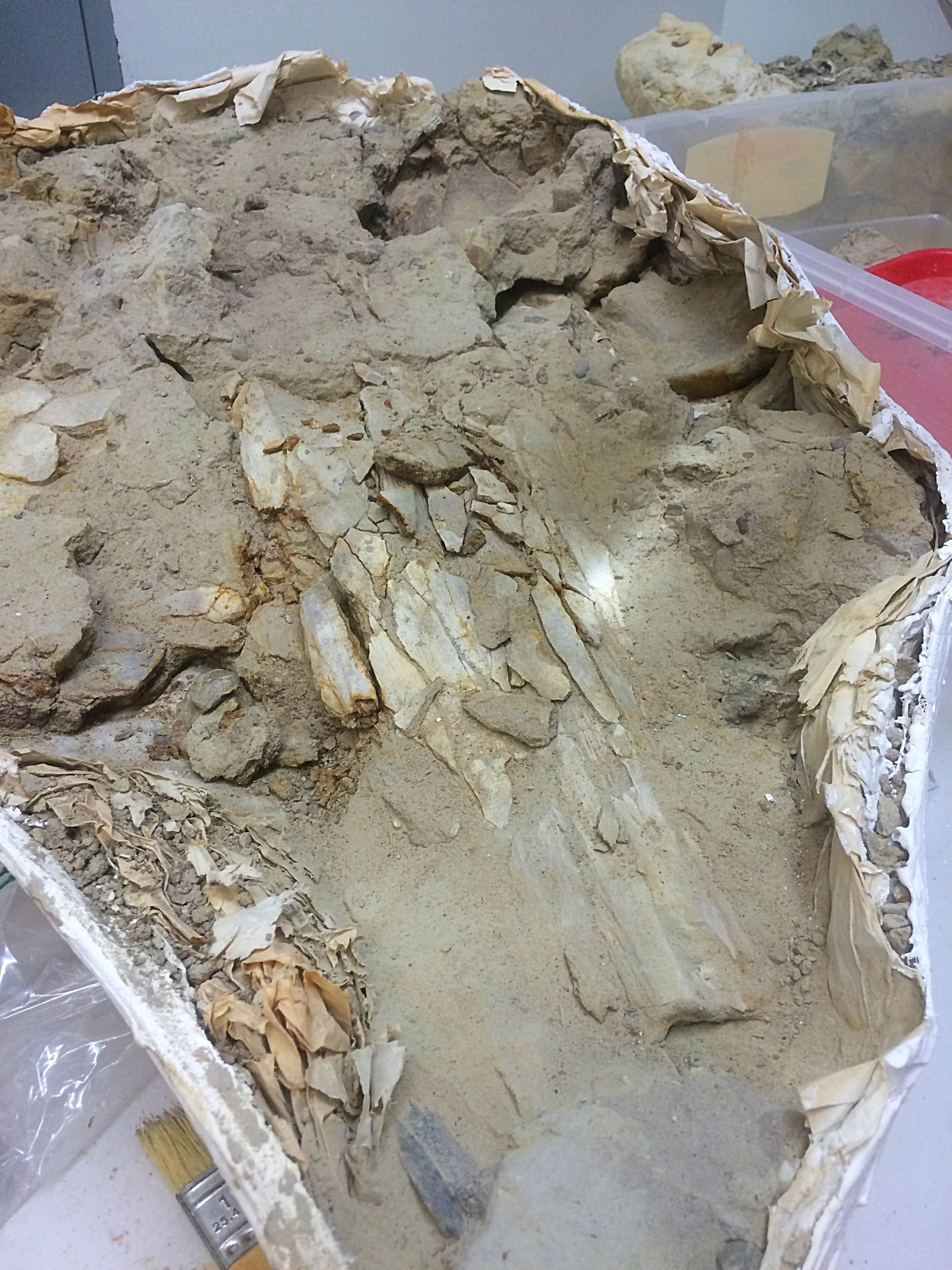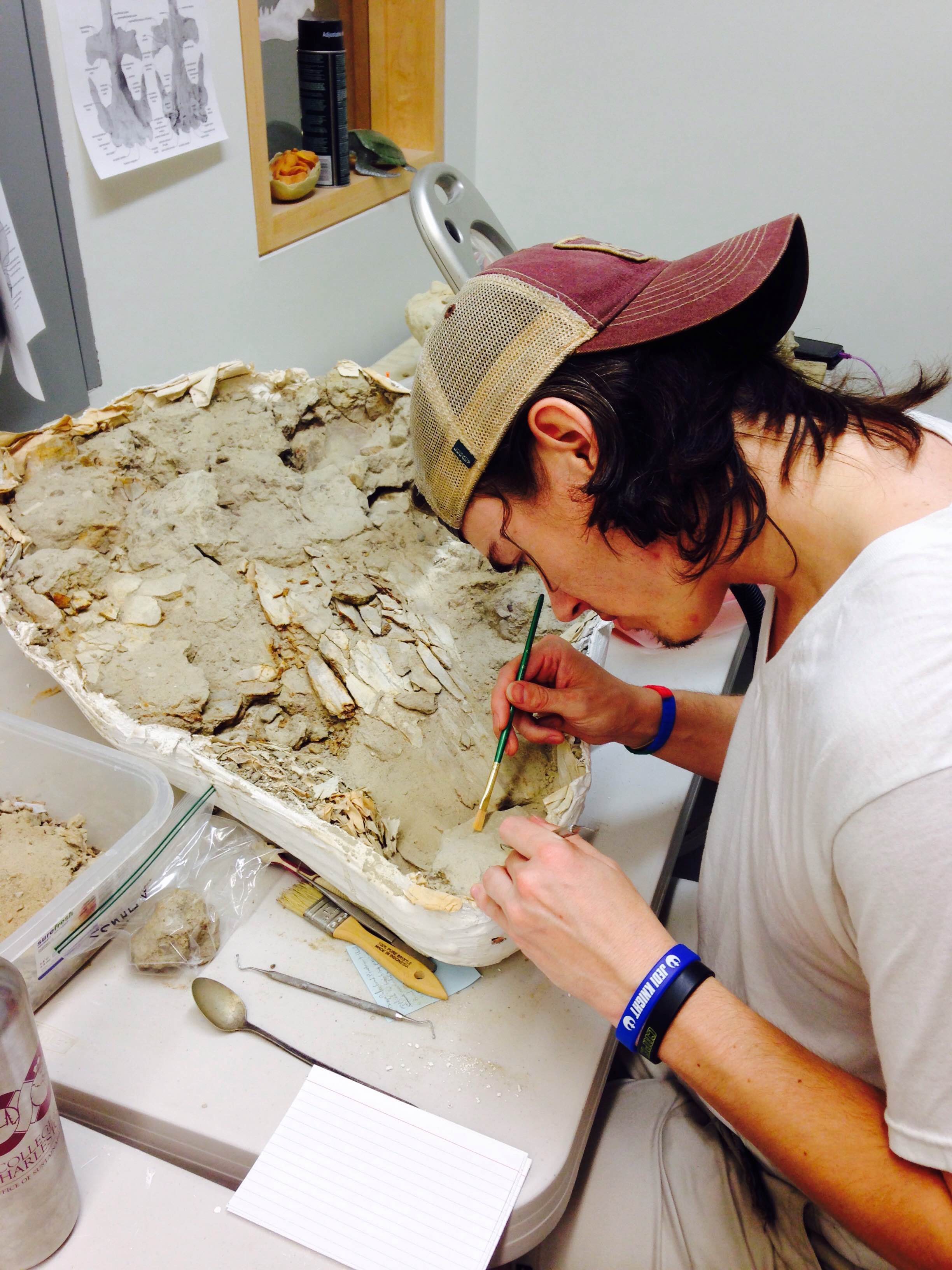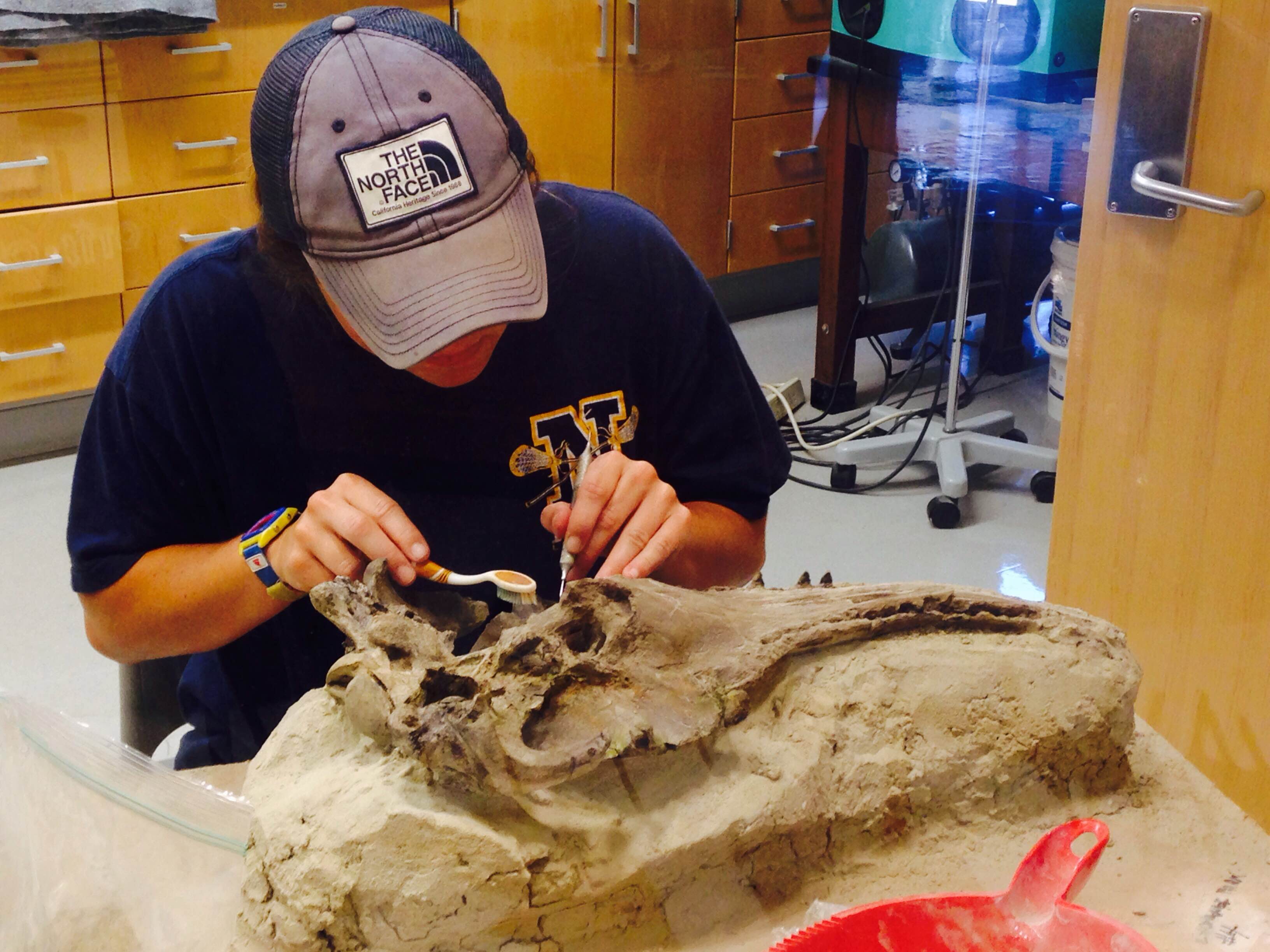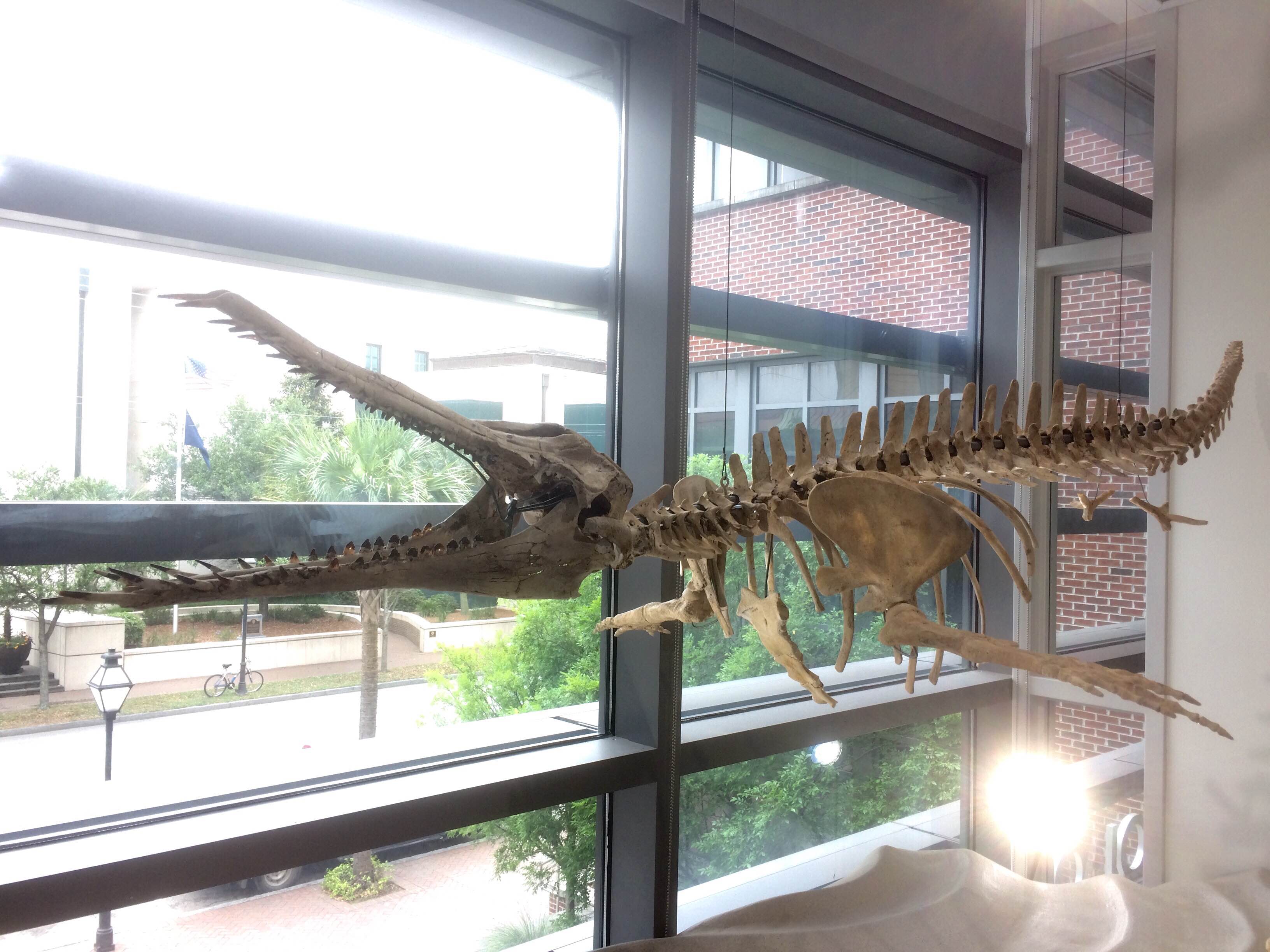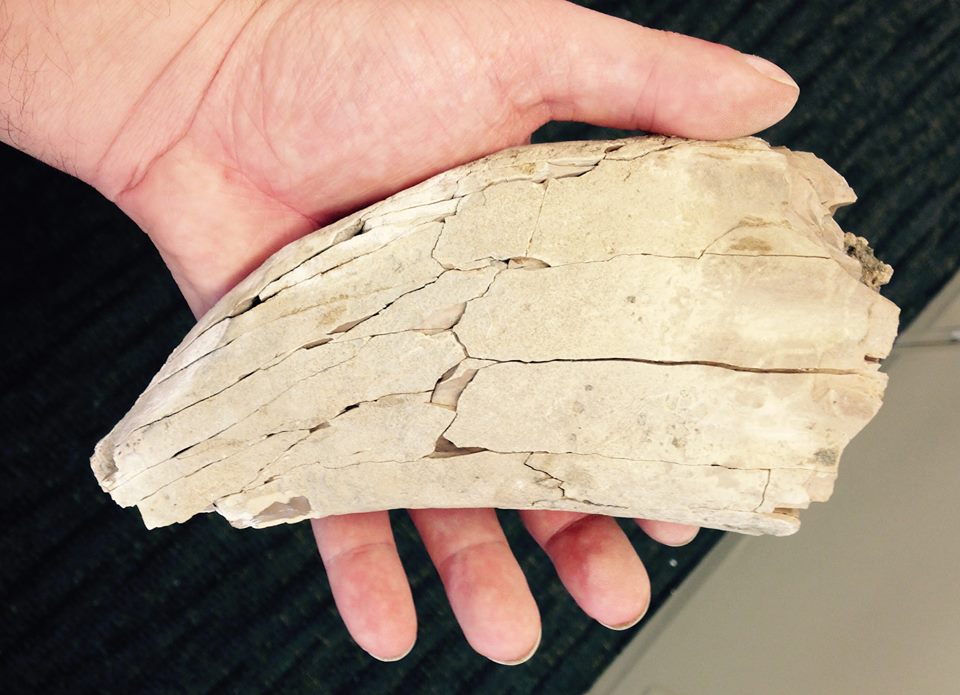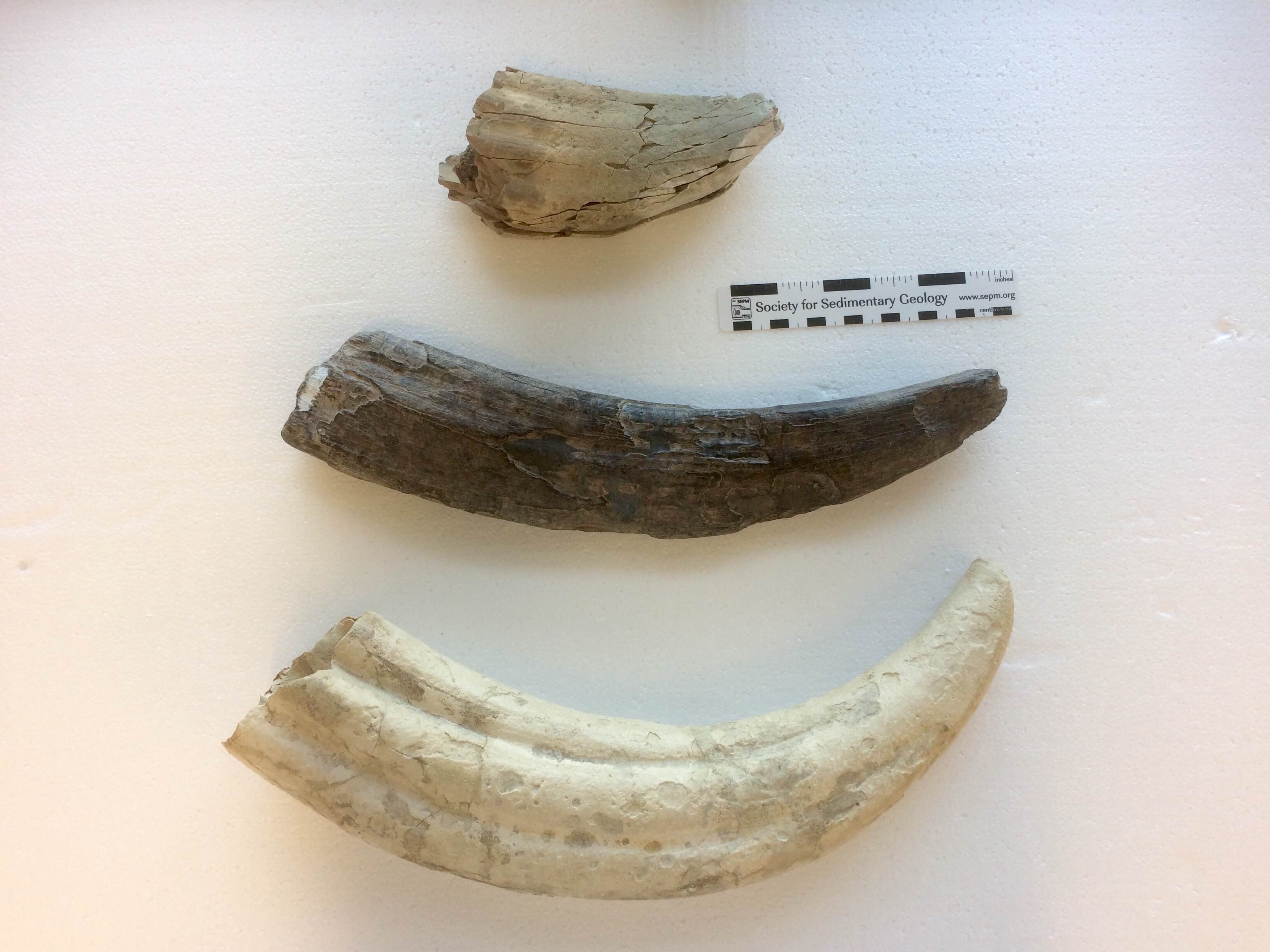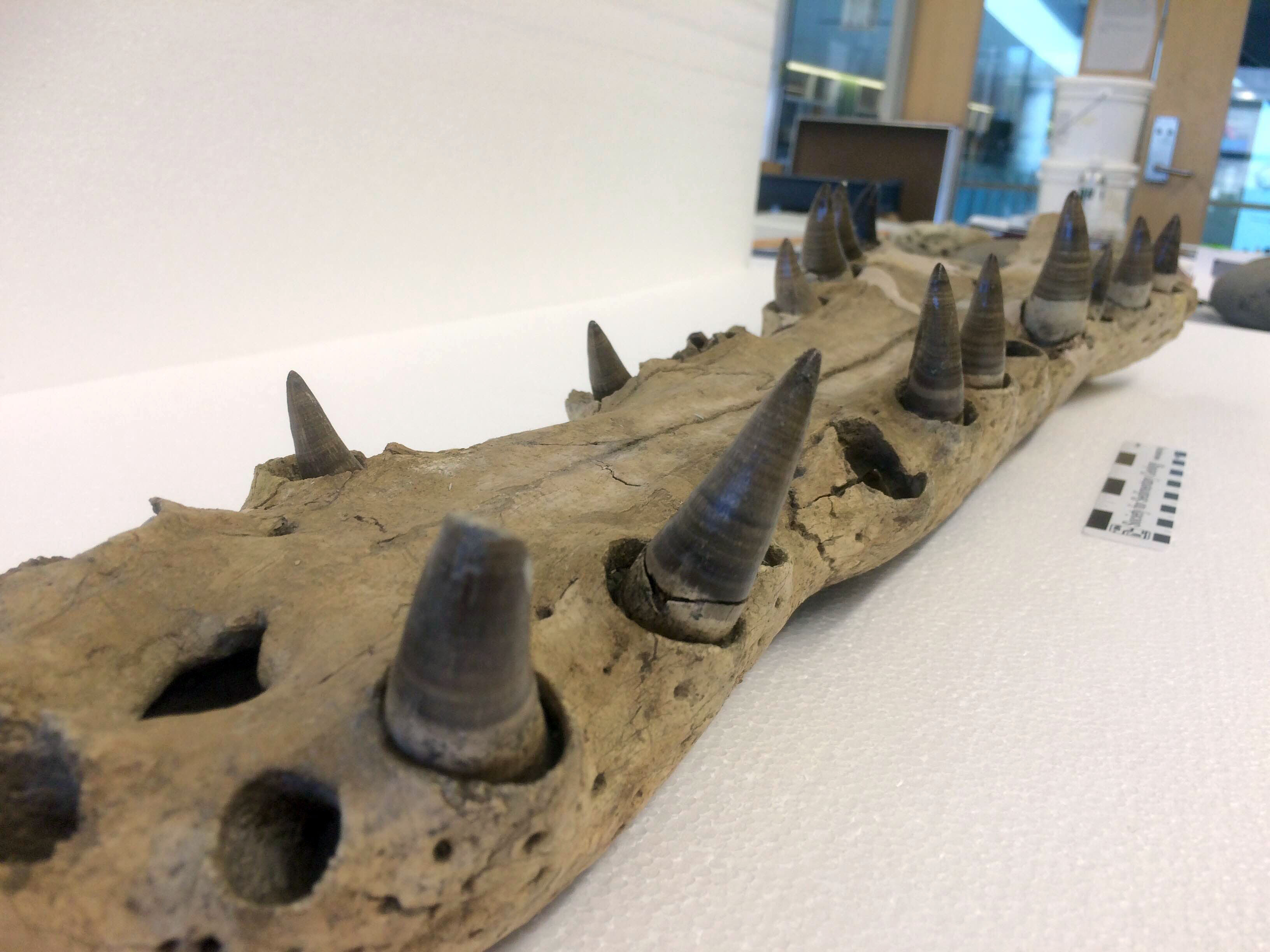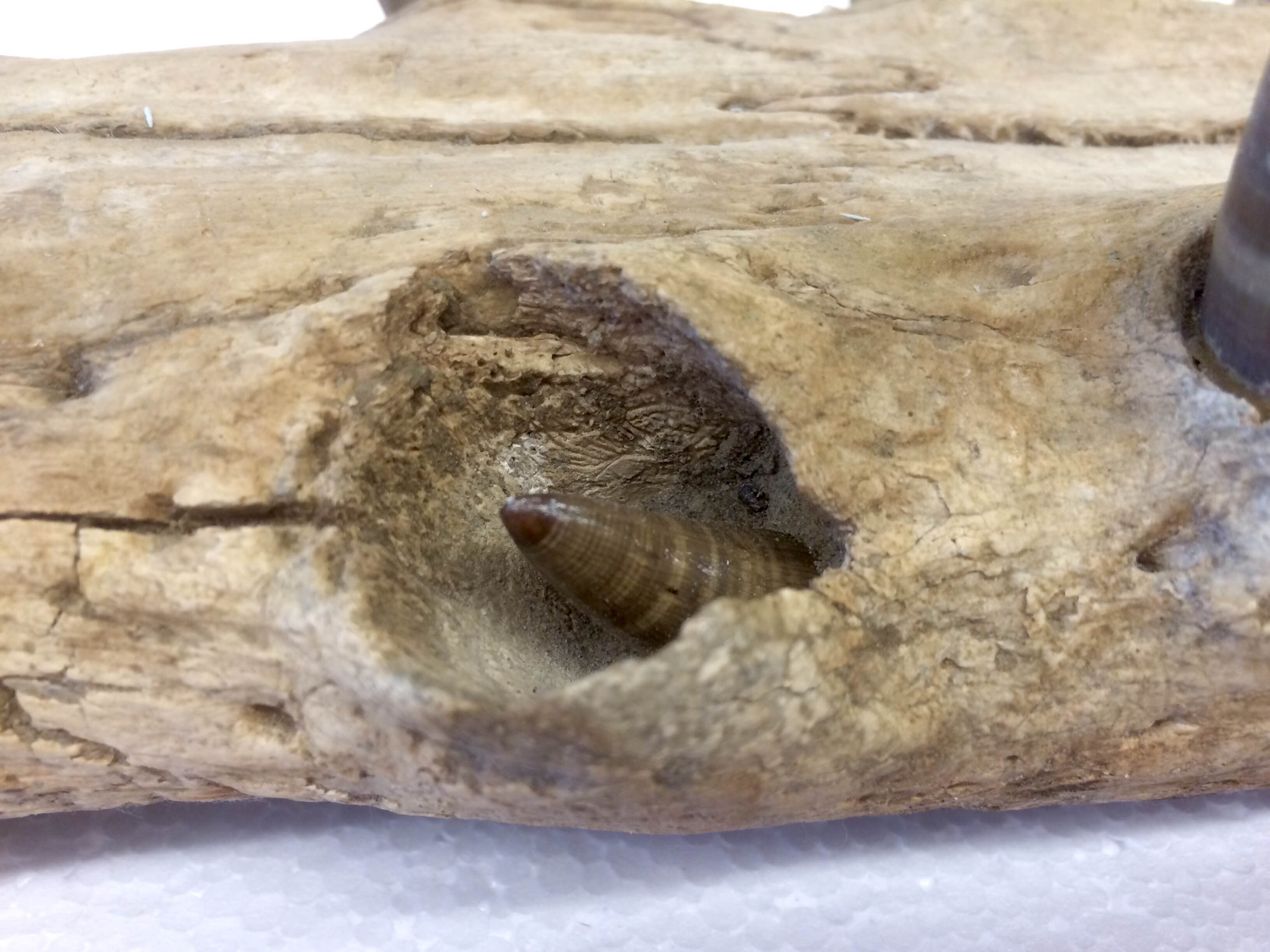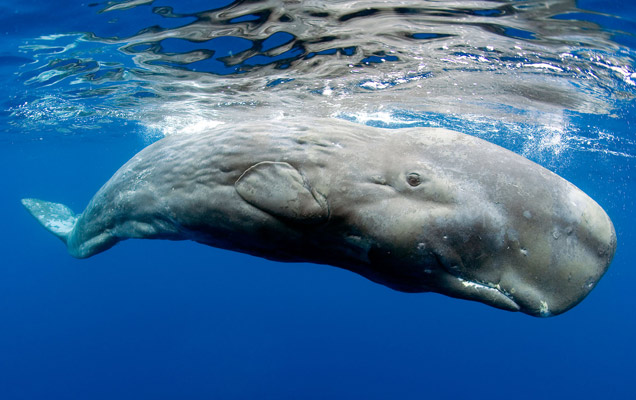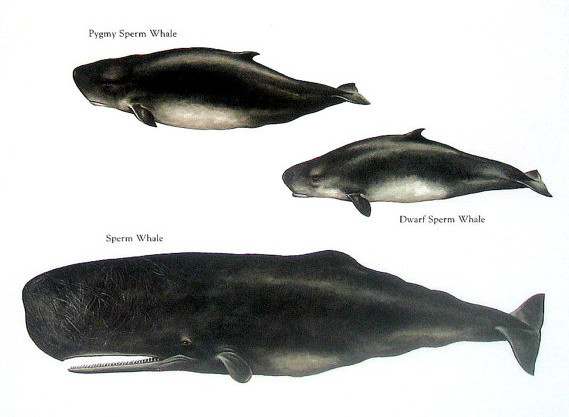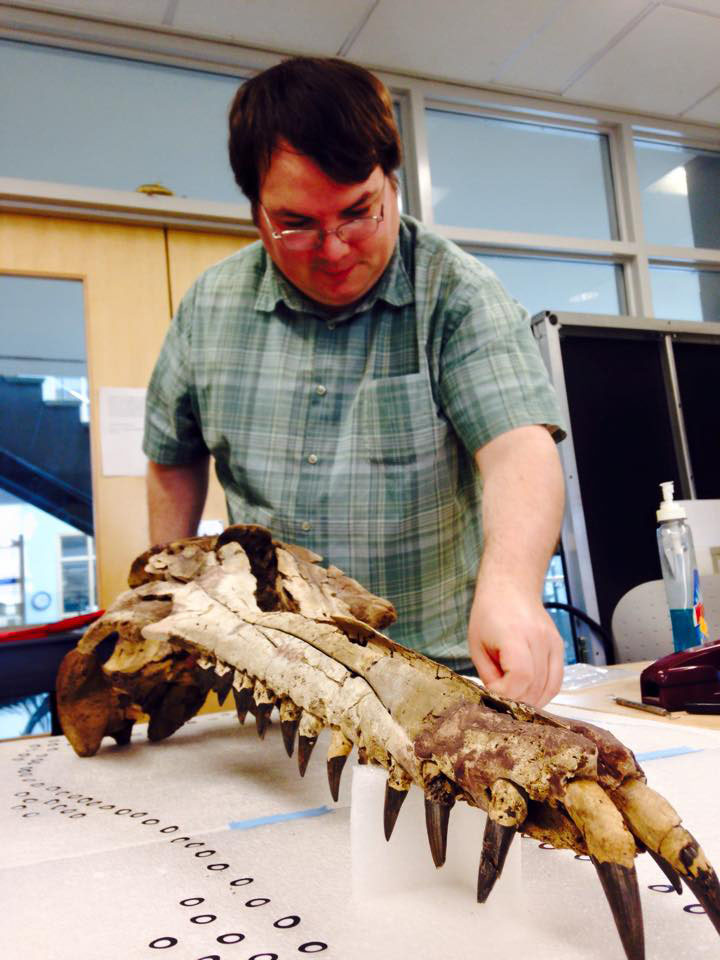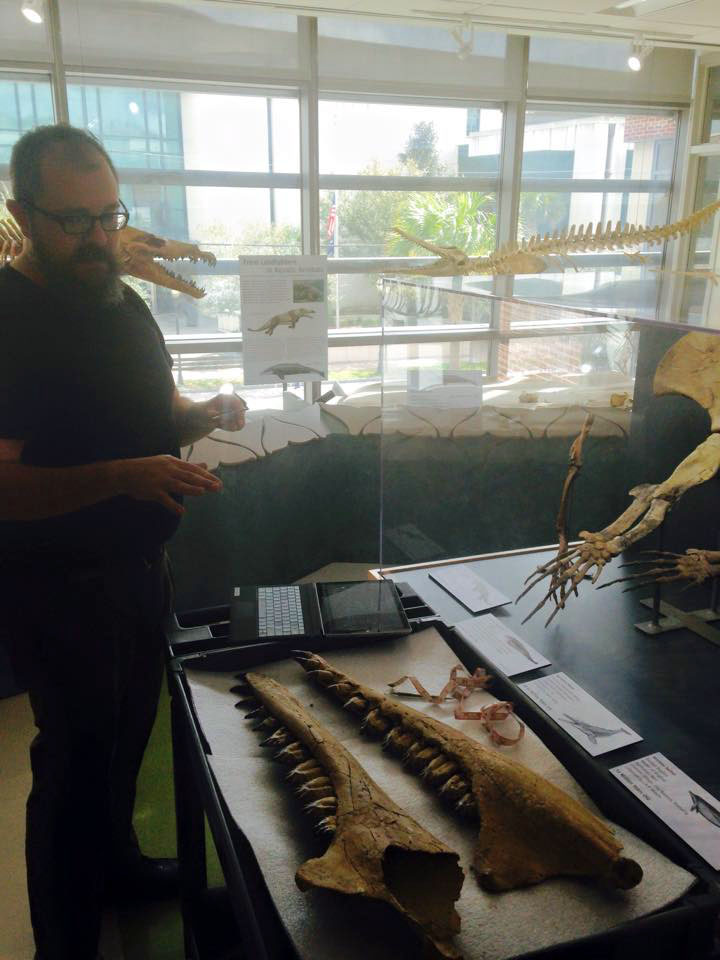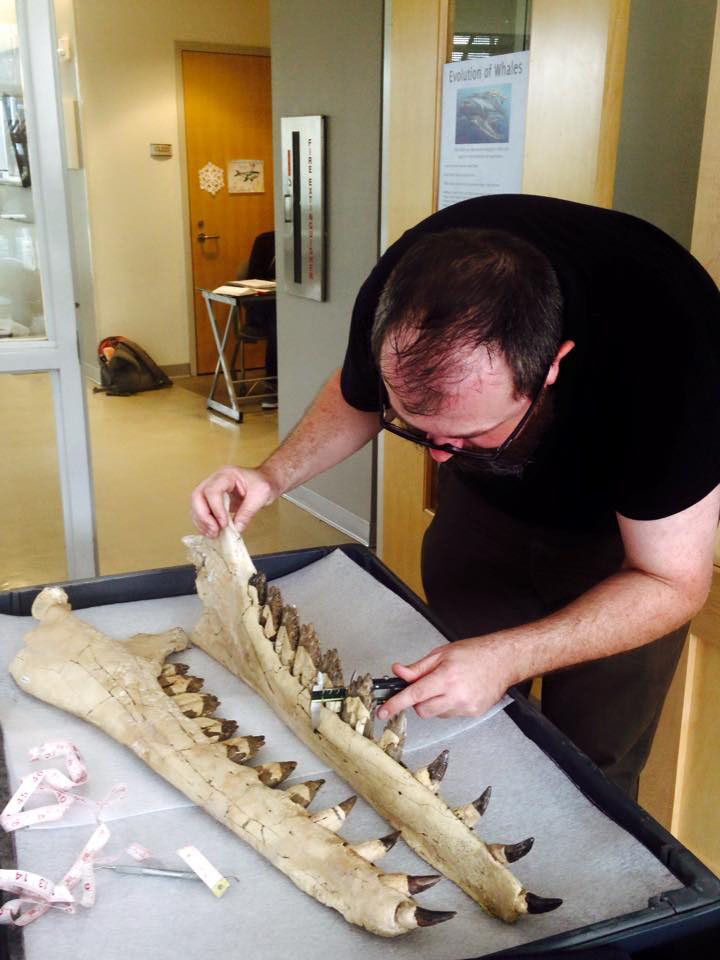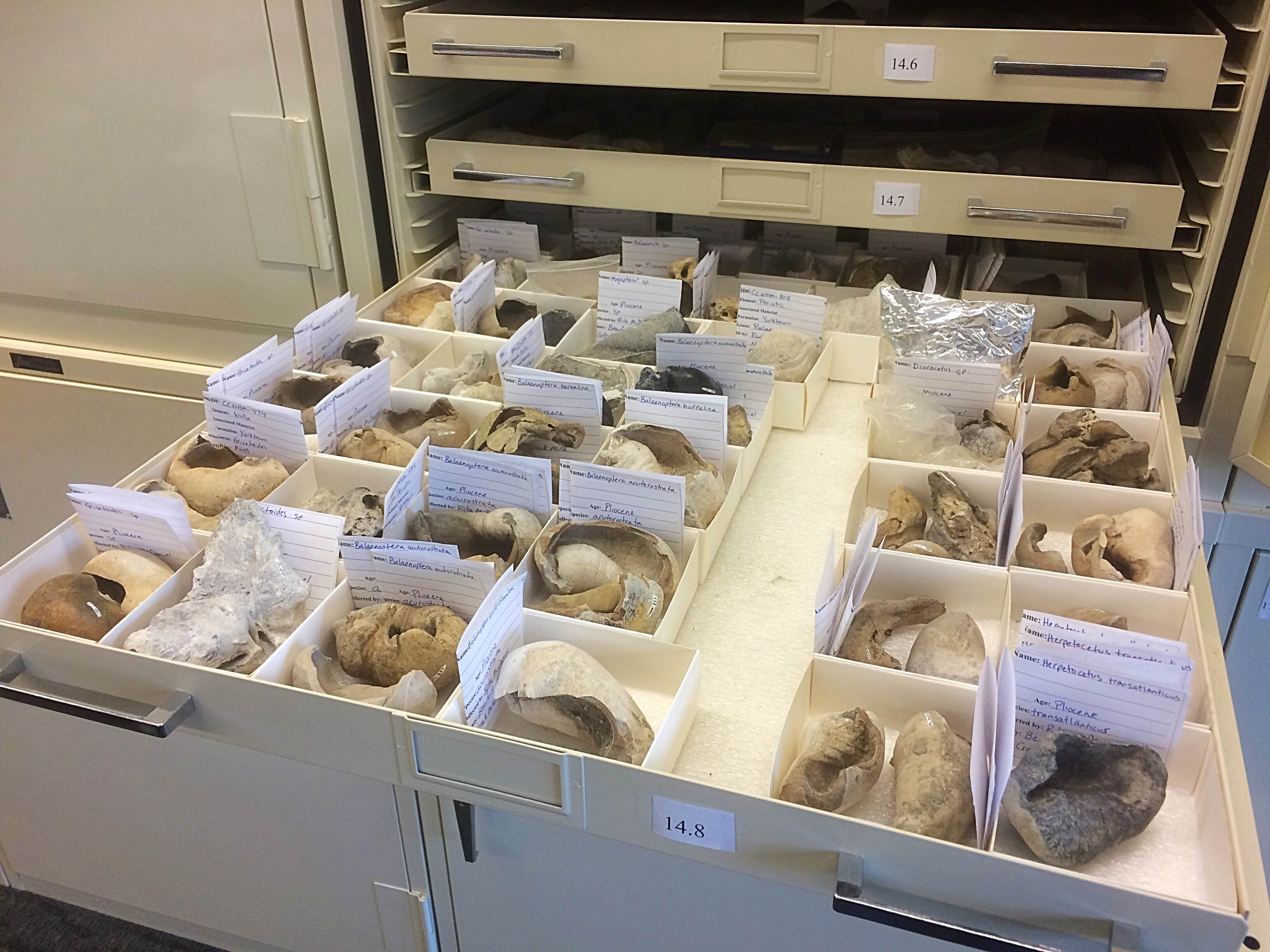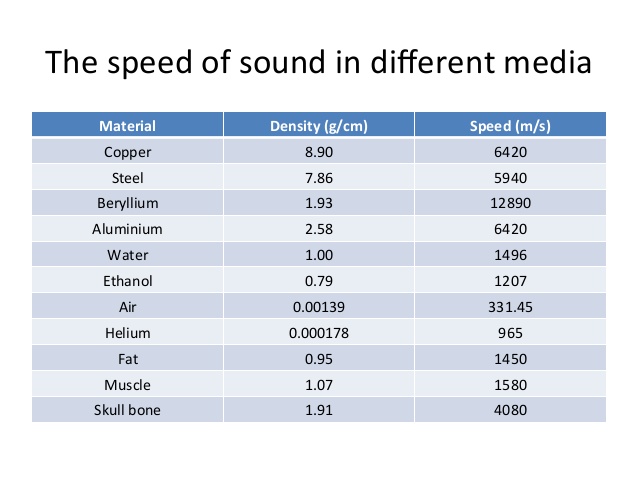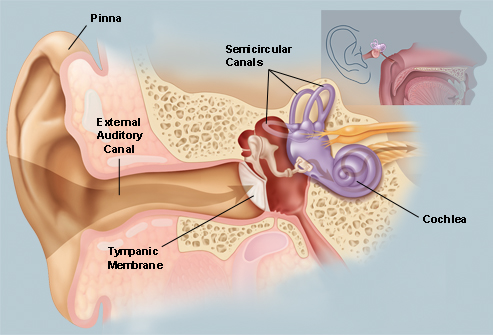by Robert Boessenecker (@CoastalPaleo) and Sarah Boessenecker (@tetrameryx)
Happy Fossil Friday! We’re back after a long hiatus, to talk about our most recent donation – A new gray whale from the Lee Creek Mine, NC, donated by Lee Cone.
The PCS phosphate mine (aka Lee Creek Mine) near Aurora, North Carolina, preserves one of the largest and most diverse assemblages of fossil marine vertebrates anywhere on earth. The marine mammal assemblage is similarly one of the world’s more important assemblages – up there with Sharktooth Hill (California, USA), the Pisco Formation (Peru), Waitaki Valley (Oligocene, NZ), Calvert Cliffs (Maryland, USA), and the Oligocene Ashley/Chandler Bridge formations right here in Charleston. The richly fossiliferous Pungo River Limestone (Oligo-Miocene) is overlain by the Pliocene Yorktown Formation; the Pungo is highly phosphatic, and is the major ore-bearing unit at the phosphate mine (the base of the Yorktown is also targeted). During these mining operations, embarrassingly rich assortments of fossils are unearthed. Shark teeth, fish bones, and bird bones are often preserved hole – but the destructive mining process tends to separate associated skeletons and break bones up into smaller pieces. Sharks, fish, and birds are often identifiable based on isolated bones – but cetaceans (whales and dolphins) are generally not, with the exception of earbones, skull parts, and jaws.
Whale and dolphin earbones are commonly found in both of the major units in the Lee Creek Mine, and tend to survive mining activities. Earbones are highly distinctive and easy for paleocetologists to identify – but when isolated, do nothing more than act as a register of a particular species at a particular place and time in earth’s history. More complete remains are generally needed to name new species and examine their evolutionary history.
President of the Special Friends of the Aurora Museum and fossil collector extraordinaire Lee Cone just donated to CCNHM a spectacular whale skeleton he collected over several weeks in 2006 prior to closure of the mine. The skeleton had gone through a dragline but dumped with skull, jaw, and postcranial remains in near-correct position. Though fragmented, Lee was able to piece back together quite a lot of the specimen. It includes a partial skull, earbones, mandibles, vertebrae, and ribs (and perhaps other postcrania).
Skeletons like this are extremely rare at the mine – visitors often only have a single morning to collect, and mining operations tend to destroy skeletons like this. In fact, even skulls and skull parts are rare; nearly every partial skull from the mine has either been named, described, or designated as a holotype specimen. Associated marine mammal skeletons – and baleen whales at that – are almost unheard of.
The baleen whale assemblage from the Pliocene Yorktown Formation includes a dwarf right whale (Balaenula sp.), a bowhead whale (Balaena ricei), a minke whale-like species (Balaenoptera sp., cf. B. acutorostrata), an extinct and very poorly known larger rorqual (“Balaenoptera borealina”), a possible humpback whale (Megaptera sp.), a gray whale (Gricetoides aurorae), and two dwarf cetotheriid baleen whales (Herpetocetus transatlanticus, Herpetocetinae n. g.). A recent donation to CCNHM from the estate of Rita McDaniel, an avid collector who amassed a spectacular collection of fossils from the mine, includes 16,000 specimens with hundreds upon hundreds of whale and dolphin earbones. This collection indicates the presence of at least one or two additional baleen whales – including a second gray whale, an undetermined genus that is perhaps closer to the modern gray whale (Eschrichtius robustus) than Gricetoides is.

Periotics, which will aid in identifying if this whale is a new genus or species. The leftmost specimen is associated with the new whale, the two specimens to the right are from the McDaniel collection donated earlier this year. Photo by R. Boessenecker
Before Lee Cone brought the specimen to CCNHM, I knew that because most of these species are represented only by material far less complete, the odds were good that the specimen would be highly significant and either 1) represent a name-able species or new genus and species, or 2) represent a publishable specimen expanding the known morphology of a pre-existing species (e.g. Gricetoides). As it turns out, this specimen shares the unique earbone morphology of the second gray whale from the McDaniel Collection – and differs in some ways from Gricetoides, confirming the presence of two gray whales in the Yorktown Formation. Lee’s whale looks to be a future holotype specimen, representing either a new species or a new genus as well!
Further Reading:
F. C. Whitmore and J. A. Kaltenbach. 2008. Neogene Cetacea of the Lee Creek Phosphate Mine, North Carolina. Virginia Museum of Natural History Special Publication 14:181-269
F. C. Whitmore and L. G. Barnes. 2008. The Herpetocetinae, a new subfamily of extinct baleen whales (Mammalia, Cetacea, Cetotheriidae). Virginia Museum of Natural History Special Publication 14:141-180

